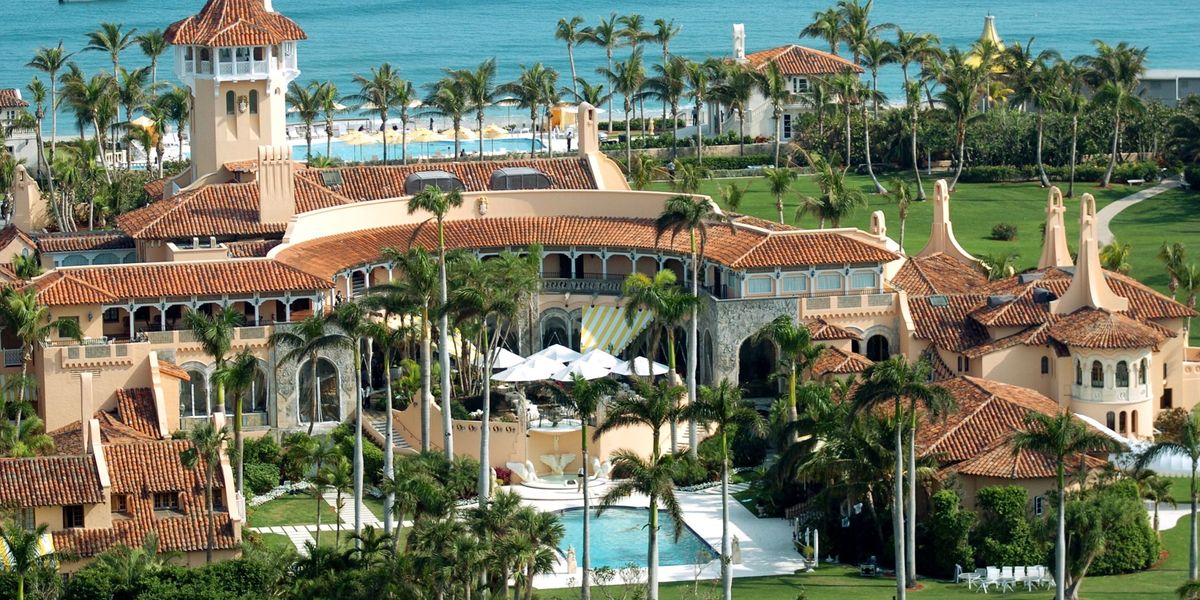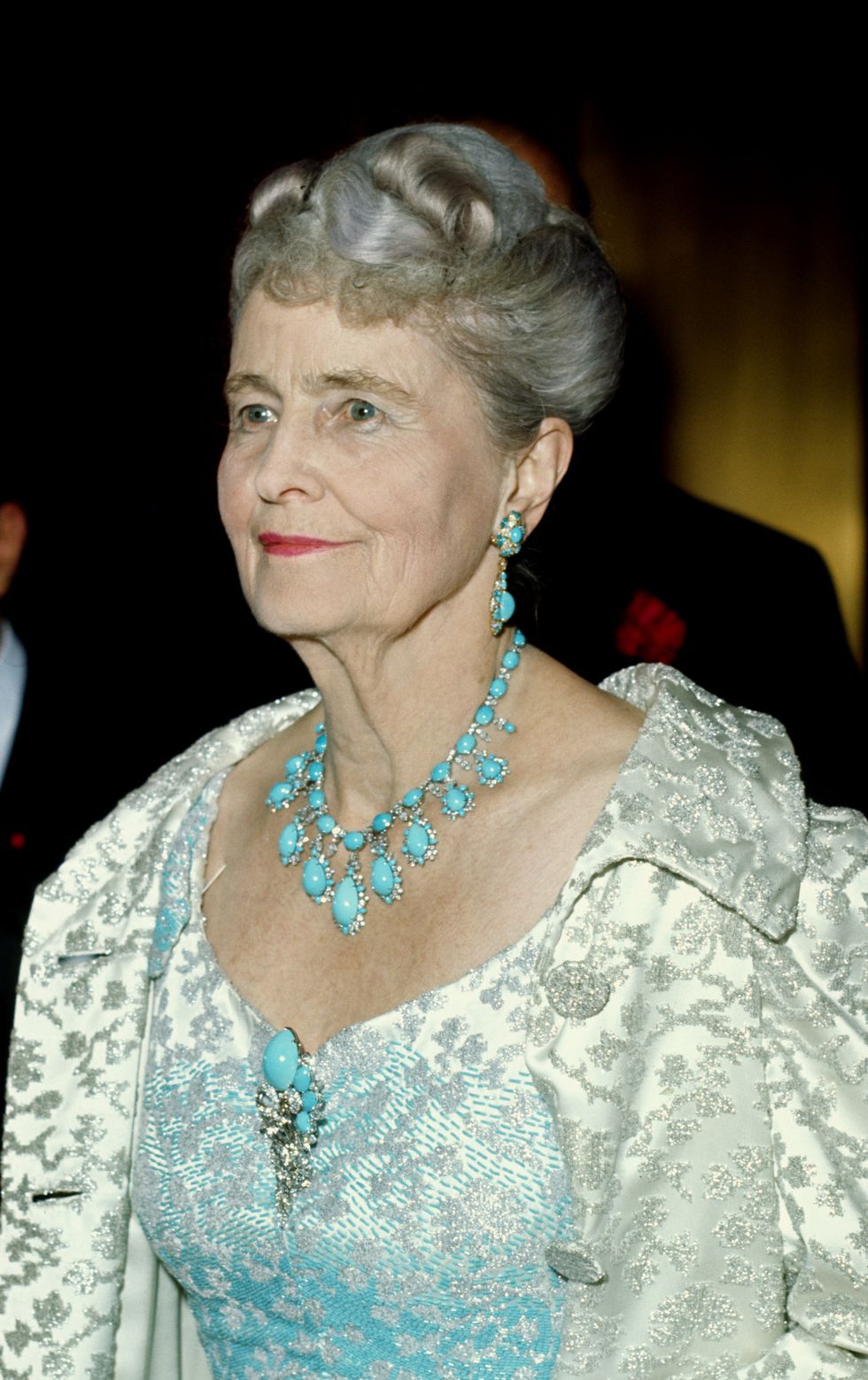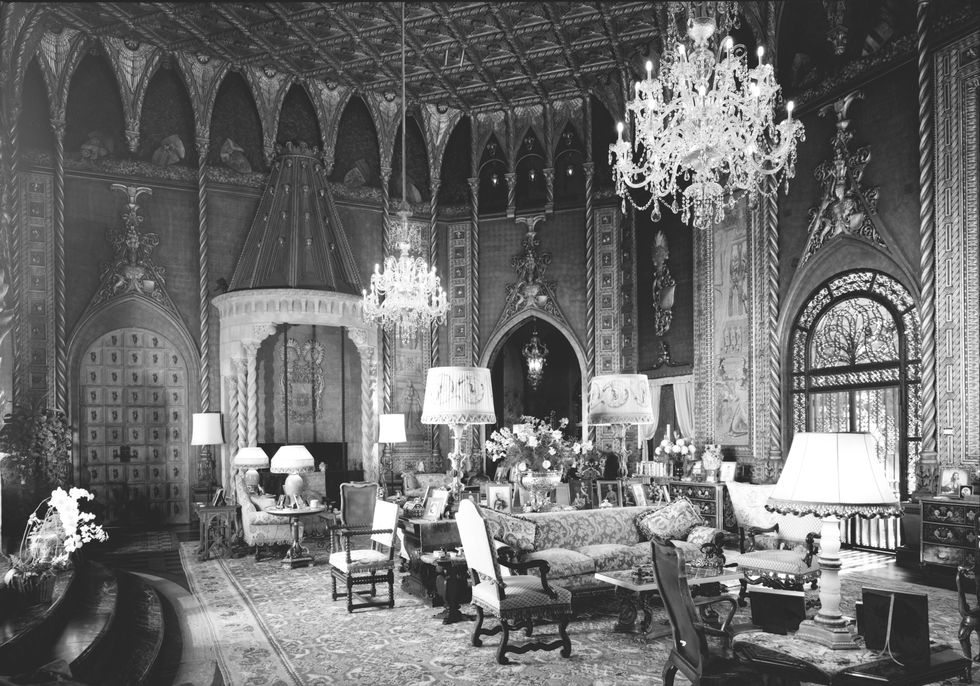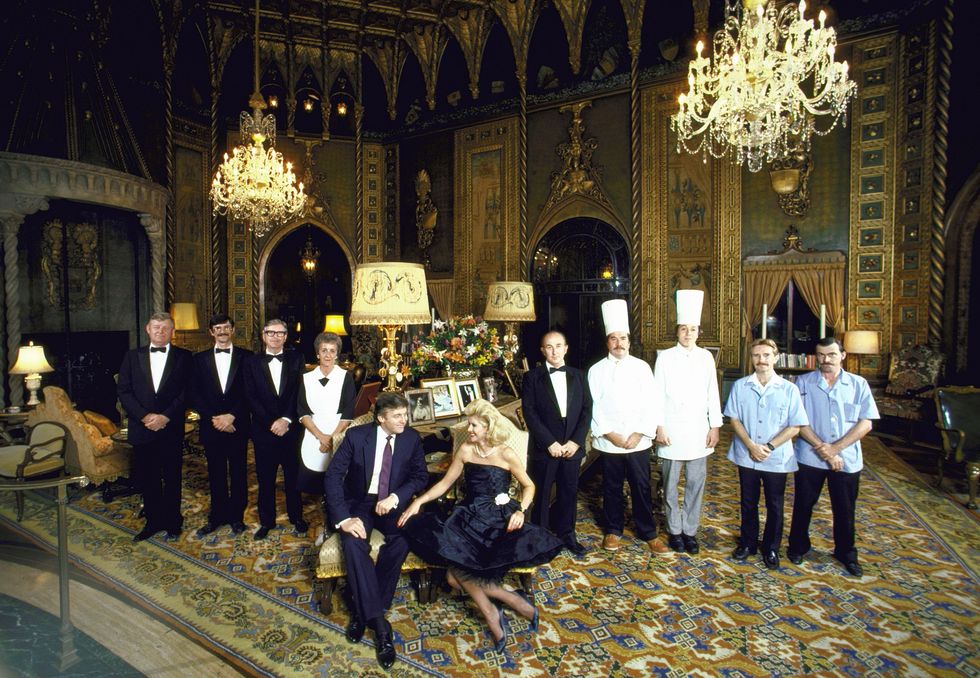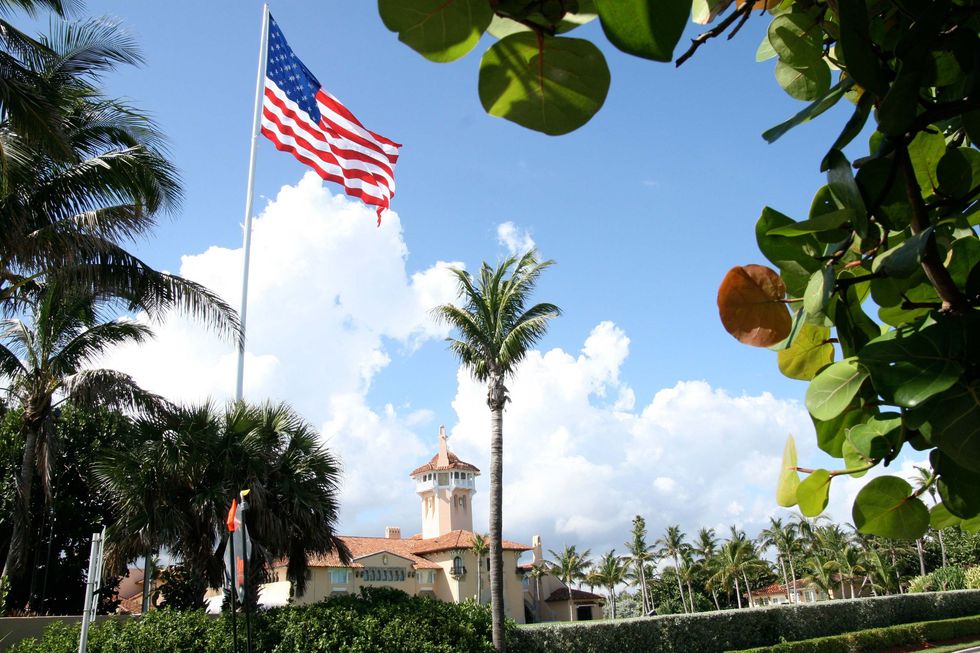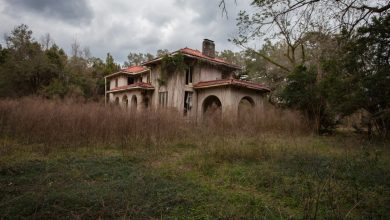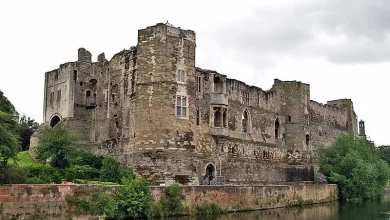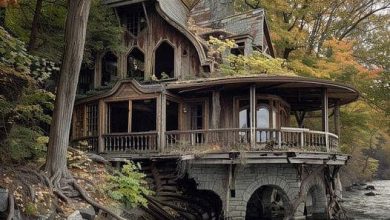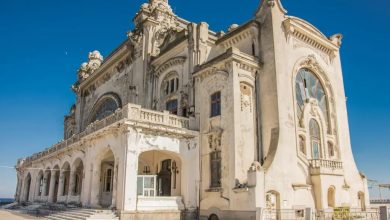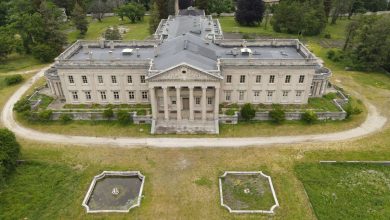Donald Trump’s Mar a Lago Estate Facts and Pictures
Original, December 2019: Donald Trump likes to call Mar-a-Lago, his Palm Beach club and catering facility, the “Winter White House,” and while that’s just his nickname for the sprawling Florida estate, there is some precedent for the moniker.
In 1973, cereal heiress Marjorie Merriweather Post donated her 128-room Palm Beach mansion to the U.S. government to be used as the “winter White House.” Post, who had inherited the Postum Cereal Company from her father and who then went on to become America’s richest woman, finished building Mar-a-Lago in 1927 at a cost of $7 million (that equals to about $120 million today).
Architects Marion Sims Wyeth and Joseph Urban designed the estate, which sits on 20 acres that border the Atlantic Ocean on one side and Florida’s Intracoastal Waterway on the other. (Wyeth also designed the Florida governor’s mansion in Tallahassee).
Post willed her home to the American government upon her death with the intention that it be used as a warm-weather retreat for the president. But in 1981 the government returned Mar-a-Lago, which had been declared a National Historic Landmark a year earlier, to the Post Foundation, citing its high annual maintenance cost of $1 million.
Enter Donald Trump. The mogul’s reported first offer for the property—$28 million—was turned down. But he persisted and the market slumped. Trump ended up getting the property for the relative bargain price of $5 million in 1985, and paid an additional $3 million for Post’s antiques and furniture.
(In addition to Mar-a-Lago, Post had a considerable real estate portfolio that included an Adirondacks retreat, a Long Island mansion, a yacht she designed herself that was the largest privately-owned yacht at the time, and a Washington, D.C estate, Hillwood, that is now a house museum containing her extensive collection of jewelry, Sèvres porcelain, Fabergé, and French masterpieces.)
Trump turned Mar-a-Lago into a private club in 1995 and built a 20,000-square-foot ballroom with $7 million in gold leaf. He commandeered a coat of arms that British authorities in 1939 had granted to Joseph Edward Davies, Post’s third husband, then replaced “Integritas,” the Latin word for integrity, with “Trump.” He also spent $100,000 on four gold-plated sinks. Basically, much like his Fifth Avenue penthouse, there is gold everywhere you look. (When Trump is in residence, he and his family stay in a private wing of the house.)
“I have 24 acres in Palm Beach and nobody has anything like that,” Trump said at a show jumping event there in 2014. “A big house is on one acre. I have 24. It’s the great estate of Palm Beach.” (Technically, Mar-a-Lago is on 20 acres.)
In 2016, Anthony Senecal, Trump’s former butler and Mar-a-Lago’s unofficial historian, offered up some secrets to the New York Times, describing the library as, “paneled with centuries-old British oak and filled with rare first-edition books that no one in the family ever read.” (Senecal was also investigated by the Secret Service for threatening comments he made on Facebook about President Barack Obama.)
Trump hasn’t always seen eye-to-eye with the locals over his plans for Mar-a-Lago. He has fought the town of Palm Beach over the size of its American flag. The original, installed in 2006, was on an 80-foot pole though Palm Beach ordinances forbid flag poles to be higher than 42 feet; a violation carries a daily fine of $250.
Trump sued for $25 million, claiming his right to free speech was being violated. Ultimately he and the town came to an agreement: he switched to a smaller flag posted on a 70-foot pole. And instead of paying fines, he donated $100,000 to veterans’ charities.
In 2015, he sued Palm Beach County again for what he called “deliberate and malicious” moves to direct departing flights from Palm Beach International Airport over Mar-a-Lago. The suit was dropped after the election, obviously, since now there is a Secret Service-mandated no-fly zone over Mar-a-Lago when Trump is in residence.
When he opened Mar-a-Lago, Trump welcomed Jewish members, African-Americans, and gay couples, who had been prohibited from joining other Palm Beach clubs. Club members reportedly used to pay a $100,000 initiation fee and annual dues of $14,000 (along with taxes and an annual food minimum of $2,000) for the privilege of using the facilities. Following Trump’s victory, the inauguration fee went up to $200,000.
It is, by most accounts, a profitable business. Trump made $15.6 million from the club in 2014. His first year in office, he made $25.1 million. Last year, that number dipped slightly to $21.4 million.
To date, Trump has spent 133 days at the property while in office. He took his first trip there as POTUS for the Red Cross Ball in early February 2017 and hosted Japanese Prime Minister Shinzo Abe the following weekend. Mar-a-Lago is where he was when he announced Lieutenant General H. R. McMaster as his pick for national security advisor, authorized a missile strike on Syria, and hosted Chinese President Xi Jinping for a two-day summit. According to the Government Accountability Office, four trips the president took to Mar-a-Lago in 2017 cost taxpayers at least $13.6 million.
In March, Mar-a-Lago temporarily closed its doors due to the Covid-19 pandemic. Three visitors, including a press secretary to Brazil’s President Jair Bolsonaro, had tested positive for the coronavirus after visiting the club for an event hosted by the President Trump.
Earlier this month, a team of Miami Herald journalists published The Grifter’s Club: Trump, Mar-a-Lago, and the Selling of the Presidency, an investigative account of the “Winter White House” and all of the business and governmental dealings—ethical and not—that take place within its walls. Among its tales of palace intrigue: Trump reportedly banned the infamous sex offender Jeffrey Epstein from Mar-a-Lago after the latter hit on a teenage daughter of a member.
In any case, it’s apparent that Trump feels more comfortable at Mar-a-Lago than almost anywhere else. He most certainly prefers it over the White House. At Mar-a-Lago, he can let loose and be himself, unbound by strict D.C. protocols and unbothered by scores of aides and handlers.
He also has more friends down there, as opposed to, say, in Manhattan, where Trump—a lifelong New Yorker—is extremely unpopular. In fact, in September 2019, he and the First Lady changed their primary residence from Manhattan to Palm Beach, where, presumably, he could pay lower taxes—and feel more welcome. He explained his decision on Twitter, saying, “I cherish New York, and the people of New York, and always will, but unfortunately, despite the fact that I pay millions of dollars in city, state and local taxes each year, I have been treated very badly by the political leaders of both the city and state.”
Governor Andrew Cuomo of New York didn’t miss the opportunity to express his feelings about the move. “Good riddance,” he tweeted. “It’s not like [Trump] paid taxes here anyway. He’s all yours, Florida.”
What to read next:
- Exploring the Enchanting History of Dunalastair Castle in Scotland
- Rowallan Castle: A Timeless Tale of Majesty, History, and Enchantment
- The Abandoned Glass Mansion of Leesburg, Virginia
- Urban explorer discovers abandoned $12 MILLION mansion.
- Bagni Wildbad: The Elegance of the Past Amidst the Italian Alps
Source: https://numerologybox.com
Category: Abandoned Place
